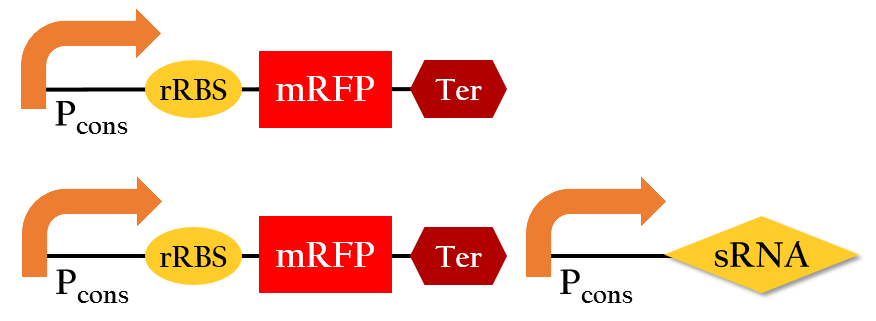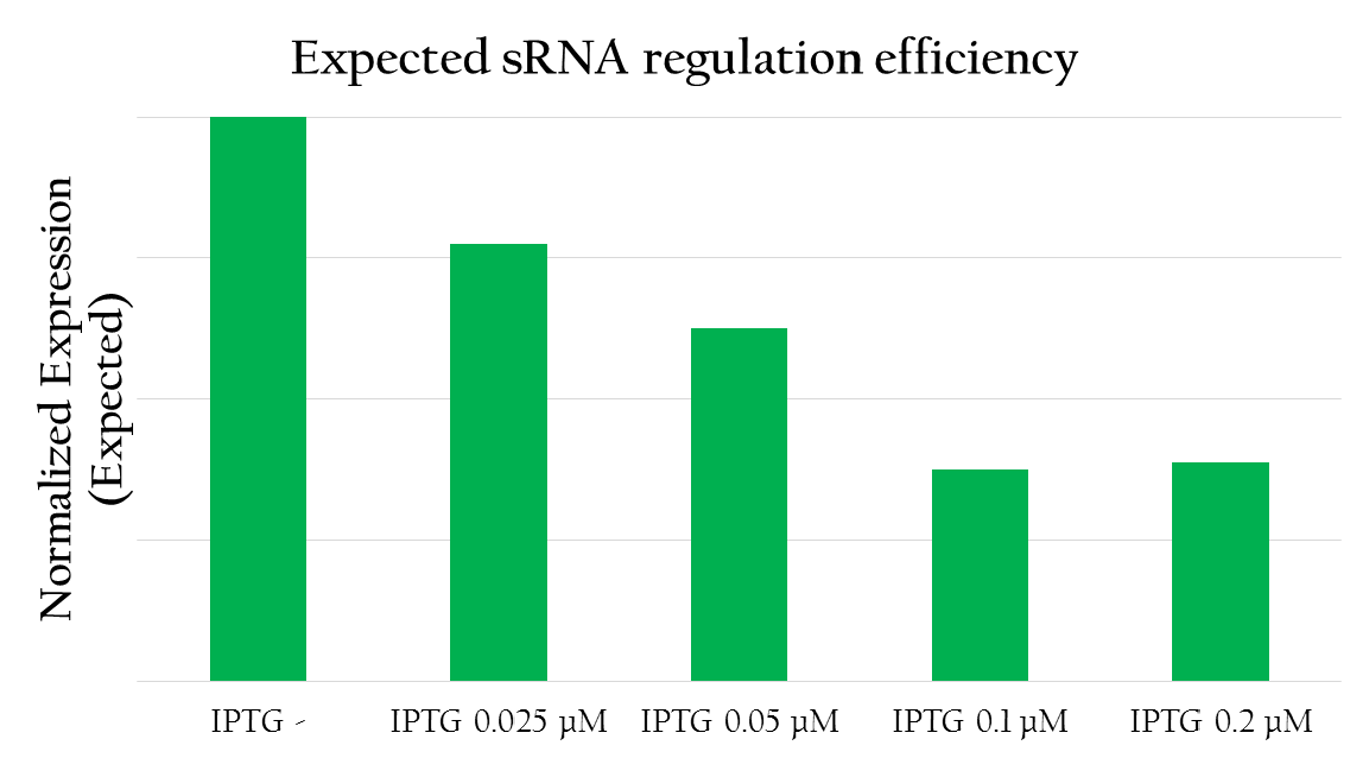Team:NCTU Formosa/results
From 2013.igem.org
The current progress of our project, including detailed information of the experimental data and the overall evaluation of the practicability of this project.
Contents |
RBS efficiency
We used the following biobrick to test the efficiency of different RBSs:
- Pcons+BBa_B0034+mRFP+Ter
- Pcons+[http://parts.igem.org/wiki/index.php?title=Part:BBa_K1017202 BBa_K1017202]+mRFP+Ter
- Pcons+BBa_B0030+mRFP+Ter
- Pcons+BBa_B0032+mRFP+Ter
- control:pet40
As you can see from Figure 1 and Figure 2, the bacterial pellet of each biobrick shows different level of RFP expressions as each RBS provides a different translation efficiency. The deeper the red color is, the higher the level of expression is.
We measured the OD value and the florescence expression for each biobrick mentioned above. The result is shown in Figure 3. We calculated the normalized expression by dividing fluorescence expression with the OD value measured, since the higher the OD value is, the larger the amount of bacteria that can express florescence would be. As shown in Figure 3, the normalized expression of the biobrick with B0034 is the highest and the one with target 1, K1017202, is the second highest, while the other two of B0032 and B0030 show weak expressions. This result implies that target 1 can, in fact, serve as a functional RBS. In comparison to other RBS, target 1 can provide moderate translational efficiency that is just lower than that of the highly efficient B0034.
37 degrees Celsius RBS
Using biobrick, Pcons+37°C RBS+mGFP+J61048, we tested the function of the 37°C RBS at room temperature and 37°C.
As shown on Fig 7. the expression of GFP under 37°C is much higher than the expression under 25°C. Such resultdemonstrates that 37°C RBS can effectively regulate gene expression by responding to temperature. The increased kinetic energy at37°C is sufficient to causes the 37°C RBS to unfold and become available for ribosome binding. Under 37°C, for example at room temperature, the 37°C RBS remains as a hairpin structure that prevents ribosome binding. Such secondary structure causes the translational efficiency to be very low, and thus, causing the level of GFP to be low as well.
Expected sRNA regulation efficiency
To test the regulation efficiency of sRNA, we employed the following biobricks: Pcons + rRBS + mGFP + J61048 and Pcons + B0030 + lacI + J61048 + Plac + sRNA.
The graph above shows the relationship between the concentration of IPTG added and the red florescent measured. The more IPTG added, the more sRNA can be produced by Plac as IPTG serves to activate the promoter. In other words, the amount of sRNA and the concentration of IPTG forms a liner relationship. With more IPTG, and therefore, more sRNA the amount of red fluorescent measured decreases. This implies that sRNA can effectively regulate the expression of RFP by decreasing the translation efficiency and the stability of rRBS.
 "
"







